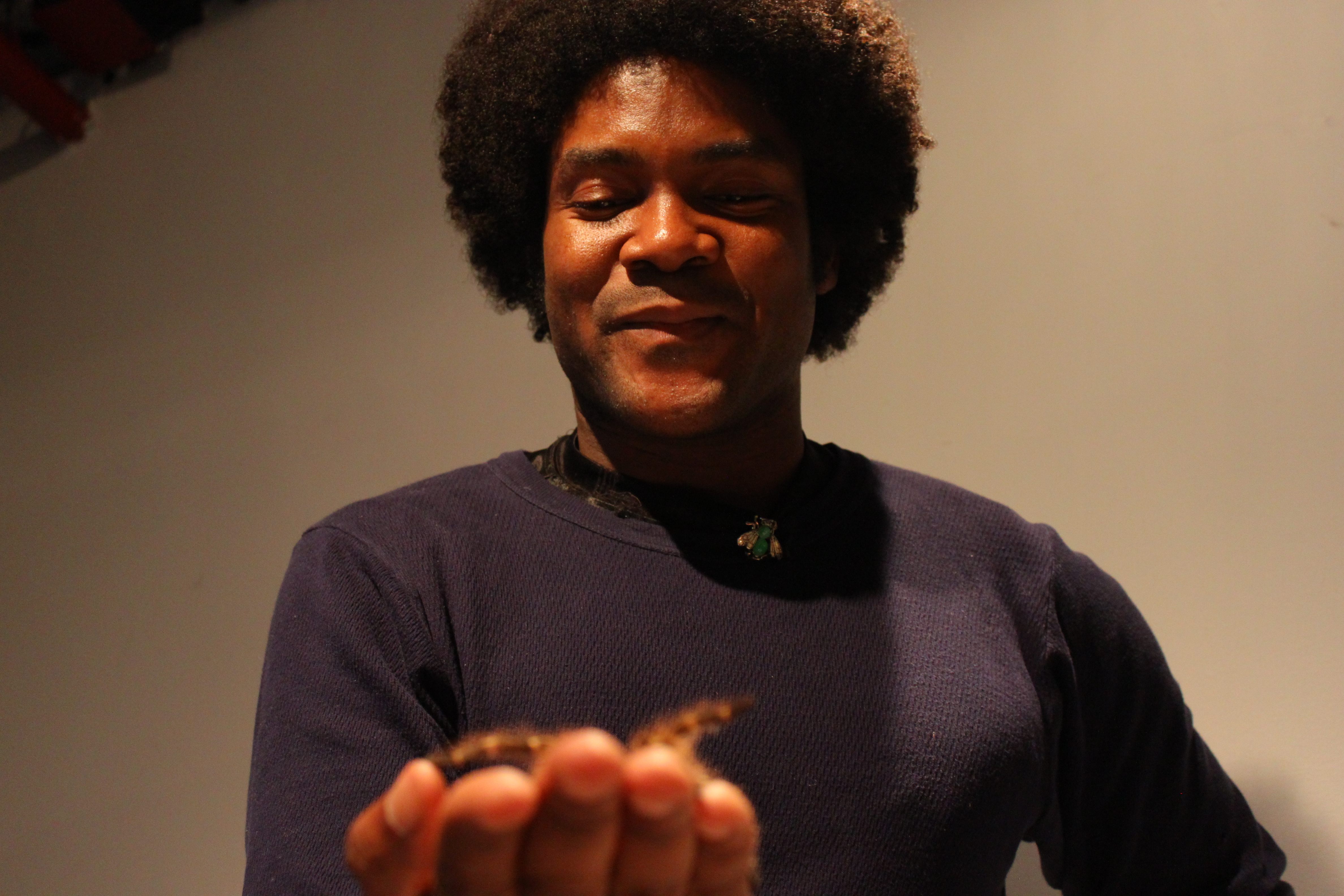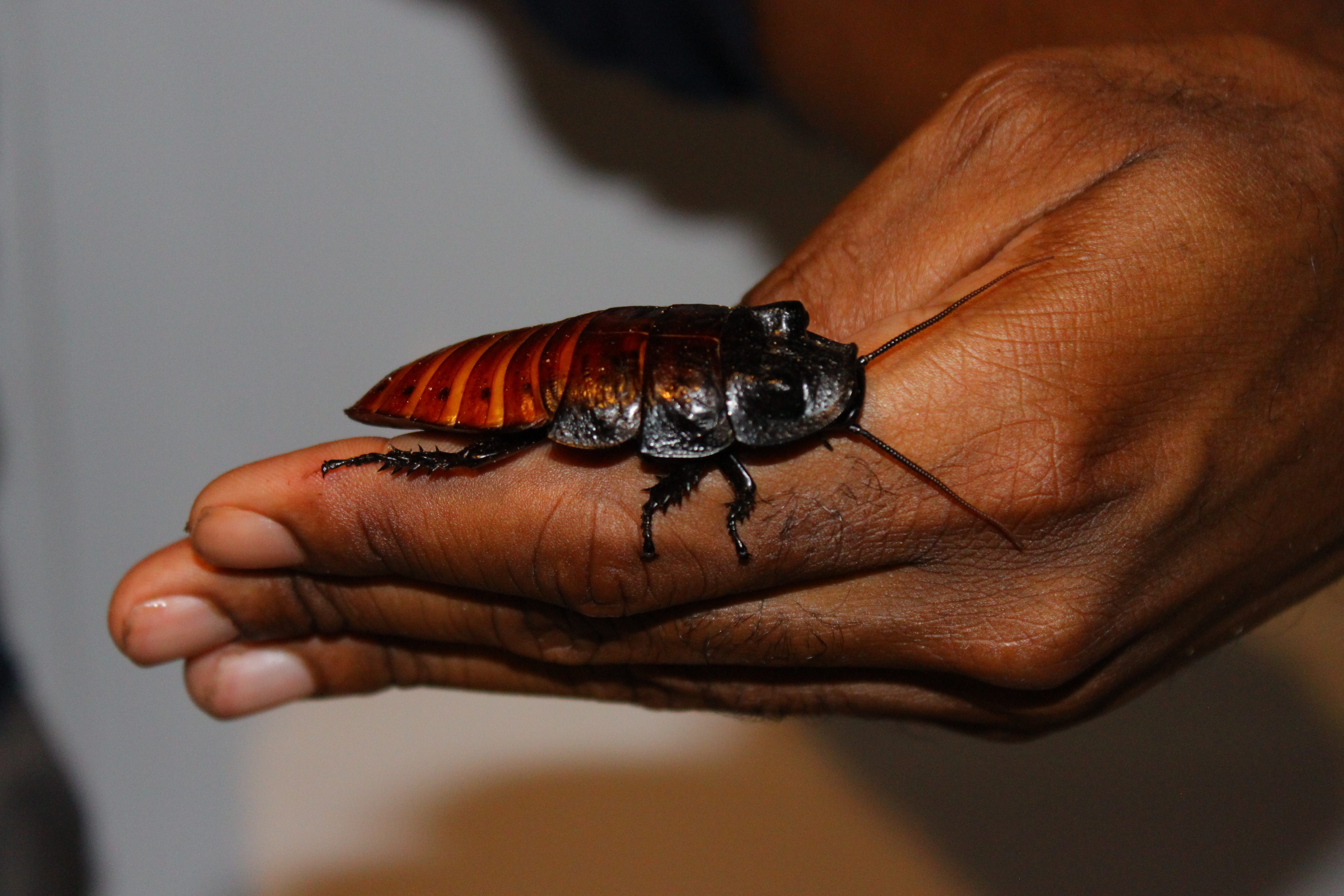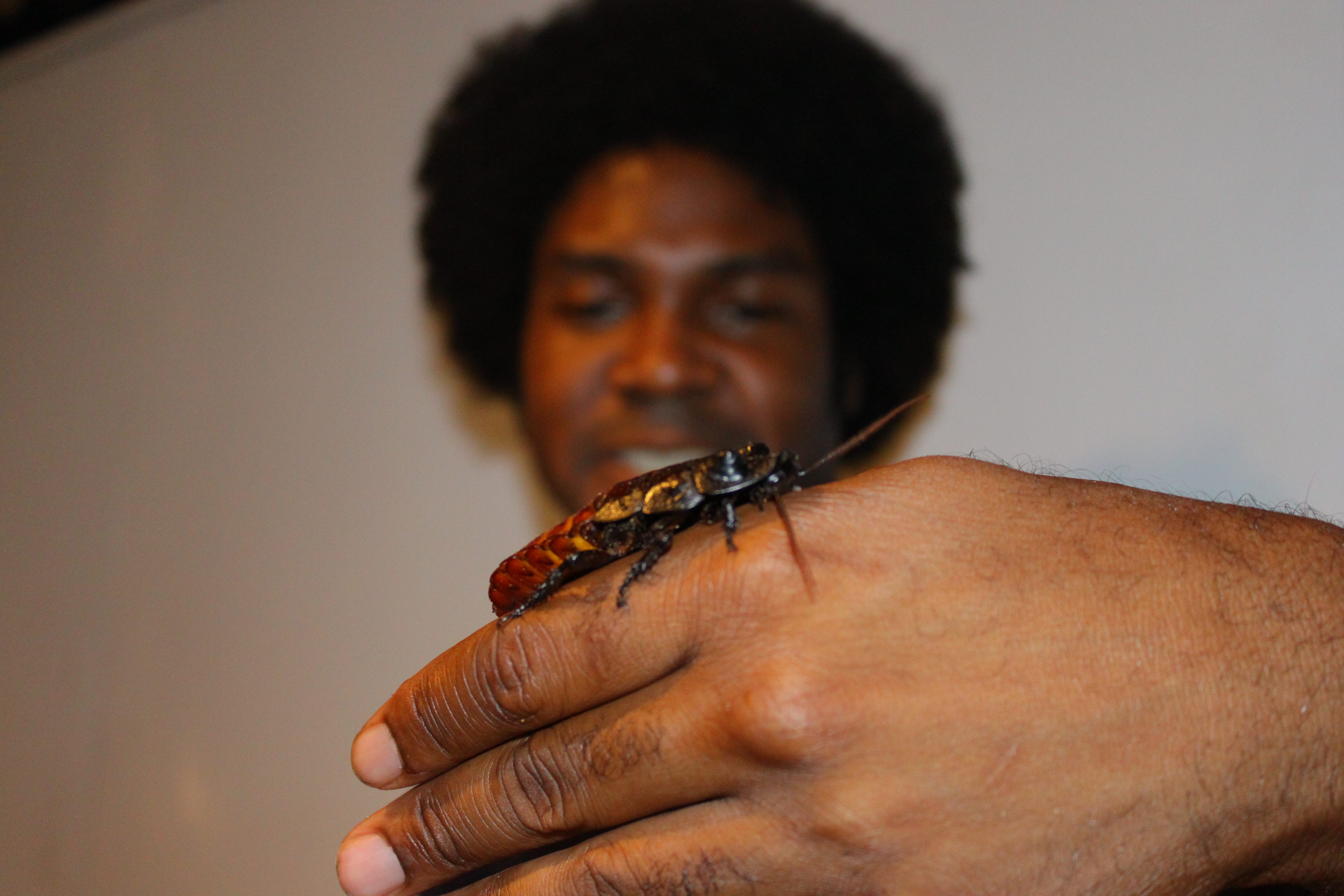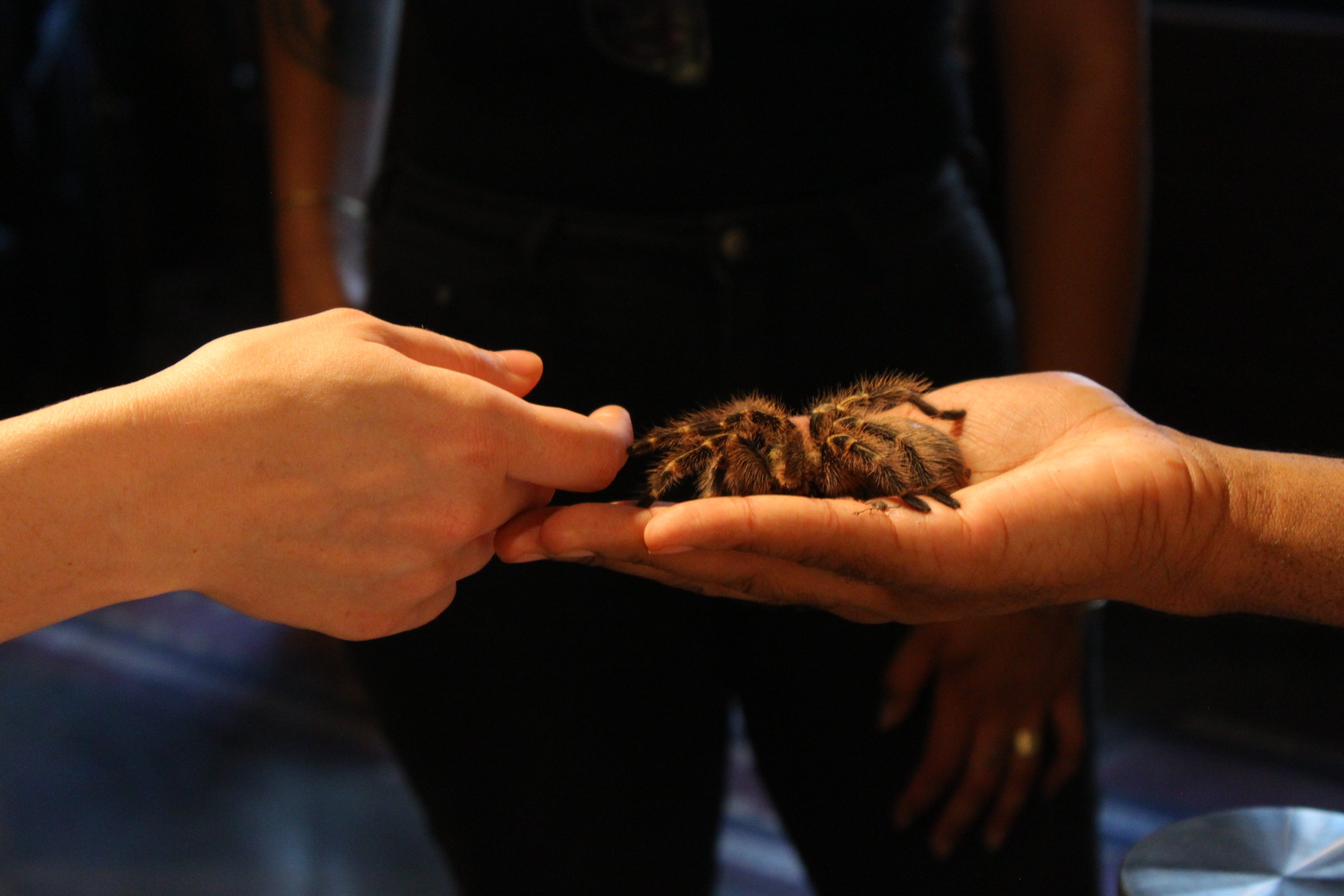The Bronx Bug Whisperer and His Traveling Insect Zoo
Can insects and humans get to know each other?


Adults and children gather in front of the man known as the Bug Whisperer. In a soft voice, he expounds on the virtues and idiosyncrasies of his live cockroach collection. Faces young and old fix their attention on the tiny, unusual pets and the magnetic charm of the man with a thick afro. Three different species of roach stand calmly on his left hand. Aaron Rodriques’ show is in full swing on a warm Brooklyn afternoon in June.
Rodriques has been raising insects for over 20 years. He knows what his pet bugs like to eat, their favorite types of shelter and what makes them nervous. It’s because of this that the creatures are more relaxed in his presence. His scent sends a positive message to the roaches, he says. And this connection extends to the other bugs he keeps as pets too.
A friend first suggested the ”Bug Whisperer” moniker as a joke, he recalls. But the nickname stuck. “I believe I have a special understanding of their behavior and psyche,” says Rodriques, 26, who has an M.A. in biology, and starts his PhD in entomology this fall. “I’ve never had a general sense of fear regarding insects, and without this barrier it is much easier to try and make sense of their behaviors.”

Rodriques shows the crowd his pet cockroach
At the talk in June he wore a bright green brooch in the shape of a housefly on the neckline of his sweater, and attempted to demonstrate how humans can forge connections with insects. The reaction in the crowd is visceral when he parades around a big hairy, yet harmless, tarantula. Many bugs and arachnids are misconstrued as aggressive, he says.
By acclimatizing different insect species with one another at his home, Rodriques says they become more accepting of interactions with different species. It all contributes to something vital: “they trust you.”

Aaron Rodriques, the bug whisperer.
This idea of human-insect habituation is rooted in academic research. “There is evidence that a variety of insect species can be “tamed” following prolonged contact with or handling by humans,” writes Hank Davis, an expert in evolutionary psychology, in an article about the Hissing Cockroach.
Davis wondered whether the cockroach might alter its habit of hissing when it became more accustomed to humans. “Yes, they can discriminate between humans,” Davis confirms in a phone interview from Guelph, Canada. “If the same person picked them up and engaged several times that hissing response would cease to occur,” he adds.
Insects are highly sensitive to different odors, the sense known as olfaction. This may help explain why Rodriques and other insect pet owners believe insects recognize them, writes Robert Matthews, a professor in entomology and an expert on insect behavior, in an email from Ecuador. “If repeated handling never gives the insect any negative reinforcement, it can learn not to worry when handled–i.e., it habituates to that odor.”

Rodriques with his pet tarantula at the Brooklyn Makers Market.
At the event in Brooklyn, Rodriques is more than happy to explain to visitors to his stall what makes each insect special. He gives one woman a very detailed description about the particularities of the Carolina sphinx moth, also called the Tobacco Hornworm, a luminous blue creature that eats tobacco and uses the nicotine it consumes as a defense mechanism against predators.
Rodriques transports his bug zoo by train from his home in the Bronx–the pet bugs plus an eel, a few geckos, two toads and two crabs in a large suitcase, sports bag and plastic trash bag. He owns about 40 species in total. Many pets live in his bedroom but he is considering moving them all down to the basement when summer temperatures rise.
The petting zoo show is a fairly regular occurrence and it makes him a busy man. During the week he works at New York University, his alma mater, as a technical writer for the I.T. department. But, he says, the shows are worth it and have been since the first one he did at the Morbid Anatomy Museum in Brooklyn just over a year ago.
“One of the best experiences of my life,” he says. “I felt like I had such a wealth of knowledge about these animals but I usually don’t share with people because they’re not interested or they’re afraid of insects. So I kind of kept it to myself.”

Have you ever stroked a tarantula?
Rodriques admits that because his animals are known for their docility, it gives the audience the illusion of a special type of control befitting a bug whisperer. Far from being insignificant, quick-to-perish creatures, he explains that some insects can live for a number of years. These are some of the many reasons they are suitable as pets.
The Bug Whisperer was always captivated by creepy crawlies. By the age of three or four, he already had ants and beetles in his possession. “I loved their shiny exoskeletons, the way they eat and interact with one another, and their ease of care,” he says.
After a day at work he comes home to feed his pets; another bonding experience. “Not that they are affectionate to you,” he admits. “But they become more accustomed to your handling.”

























Follow us on Twitter to get the latest on the world's hidden wonders.
Like us on Facebook to get the latest on the world's hidden wonders.
Follow us on Twitter Like us on Facebook